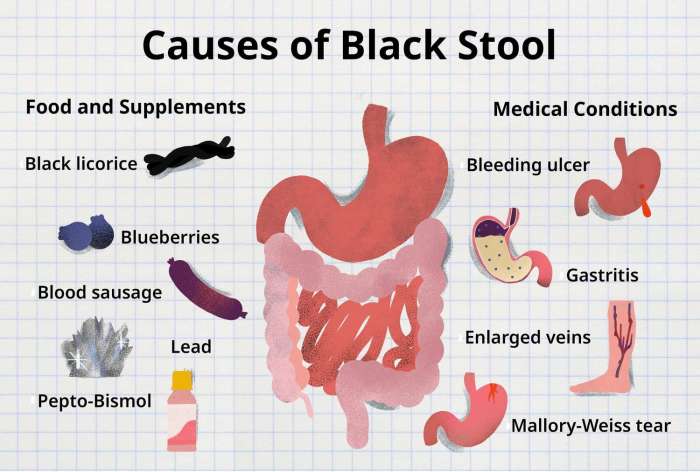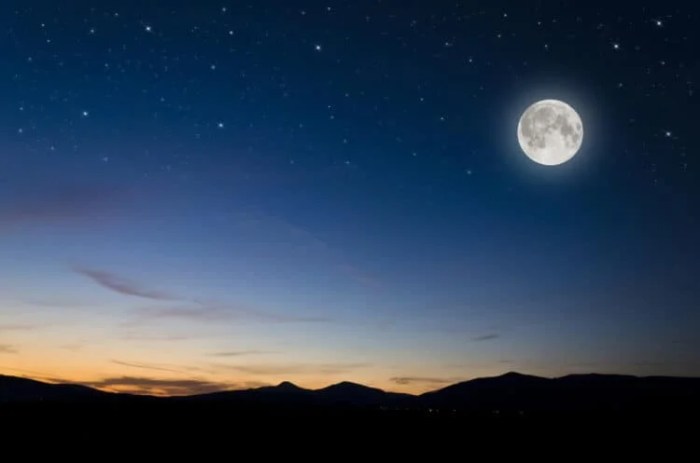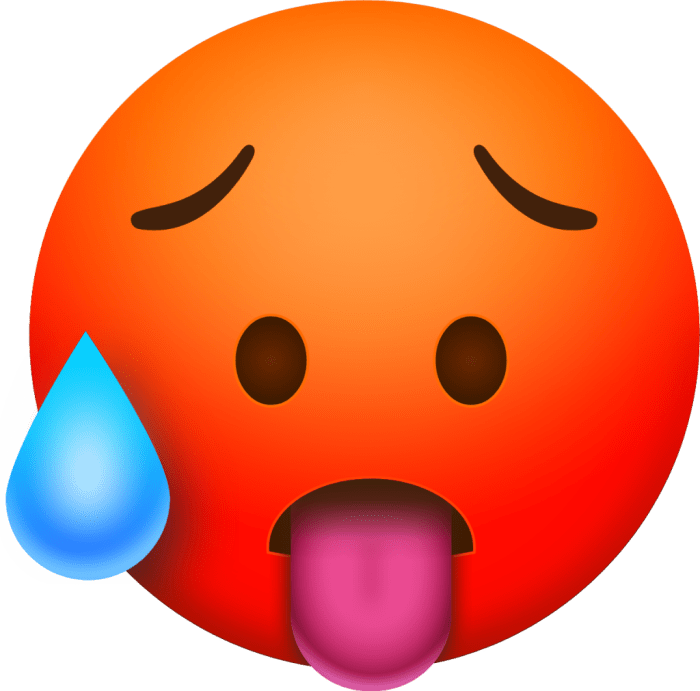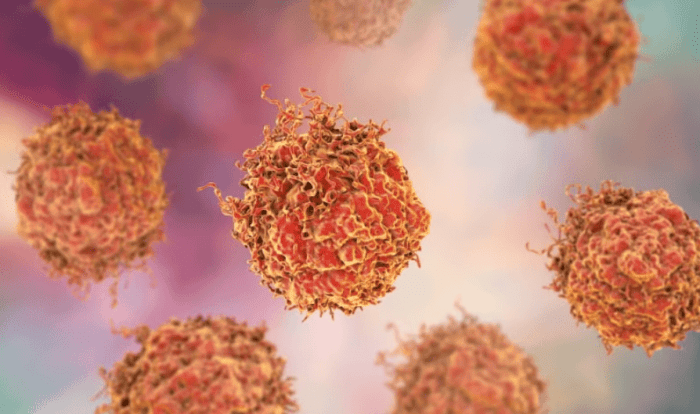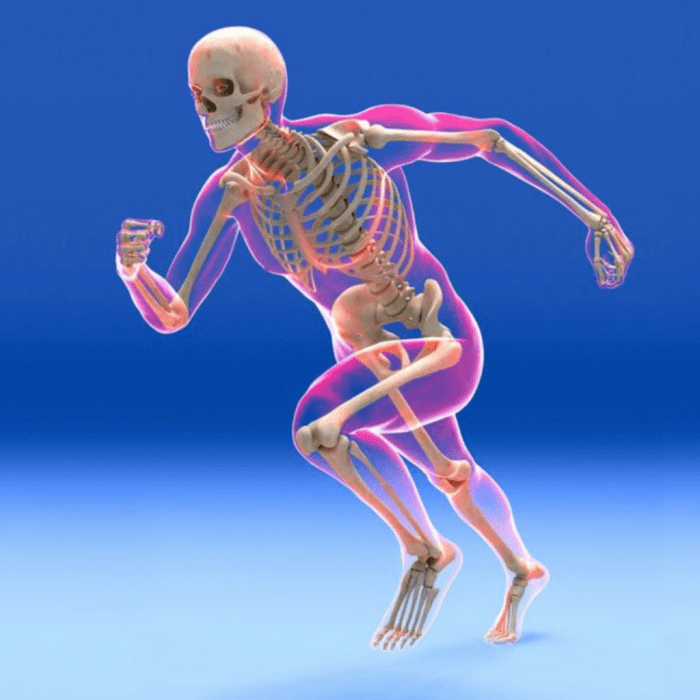Wet amd coping support and living well is a crucial aspect of holistic well-being for those facing wetness-related challenges. This comprehensive guide explores diverse strategies, from understanding the various types of wetness and their impacts to building strong support systems and fostering long-term well-being. We’ll delve into practical daily strategies, mental health considerations, and the importance of creating accessible environments.
It’s about navigating the everyday while prioritizing your overall well-being.
This guide provides a framework for understanding the multifaceted nature of wetness-related challenges. We’ll examine how different cultures approach these issues and highlight successful coping mechanisms. Crucially, we’ll address the potential mental health impacts, emphasizing the significance of self-care and resilience-building techniques. The aim is to empower individuals to live fulfilling lives despite these challenges.
Understanding Wet and Coping Support: Wet Amd Coping Support And Living Well
Wetness, in the context of coping support, encompasses a broad range of situations where excessive moisture or fluids affect daily life and well-being. It’s not just about physical discomfort; it can significantly impact emotional and mental health. Understanding the different types of wetness, their causes, and potential effects is crucial for developing effective coping strategies. This knowledge empowers individuals and communities to navigate these challenges with greater resilience and support.Addressing wetness requires a multifaceted approach that considers the individual’s unique circumstances, cultural background, and available resources.
Effective coping strategies can range from simple adjustments to lifestyle to seeking professional guidance. Furthermore, recognizing the diverse ways different cultures and communities approach wetness-related issues can provide valuable insights and support systems.
Definition of “Wet” in Coping Support
“Wet” in the context of coping support refers to any situation where excessive moisture or fluids negatively impact an individual’s daily functioning and well-being. This includes physical discomfort, social stigma, and emotional distress. The wetness can be internal (such as incontinence) or external (such as excessive perspiration or environmental dampness).
Types of Wetness and Their Impacts
Various types of wetness can significantly impact daily life. These include:
- Incontinence: This encompasses urinary and fecal incontinence, which can lead to feelings of shame, embarrassment, and social isolation. Individuals might experience difficulty participating in social activities, maintaining employment, and managing their personal hygiene. The emotional toll can be profound, impacting self-esteem and overall quality of life.
- Excessive Perspiration: Hyperhidrosis, or excessive sweating, can cause discomfort, social anxiety, and difficulties in maintaining personal hygiene. This can lead to feelings of isolation and embarrassment, especially in public settings.
- Environmental Dampness: Living in damp or humid environments can contribute to health problems and make daily tasks challenging. The constant exposure to moisture can lead to skin issues, respiratory problems, and a general sense of discomfort.
- Post-Surgical Drainage: After surgical procedures, there can be significant drainage that requires meticulous care and management. This can create a period of vulnerability and dependence, which needs careful support and resources.
Coping Strategies for Managing Wetness
Effective coping strategies are tailored to the specific type of wetness and individual needs. They can include:
- Lifestyle Adjustments: Dietary changes, exercise routines, and modifications to daily routines can help manage some types of wetness. For instance, individuals with incontinence might benefit from regular bladder training exercises or dietary modifications.
- Personal Hygiene Practices: Maintaining proper hygiene is crucial in managing wetness. This includes using absorbent products, changing clothes frequently, and practicing good skin care.
- Seeking Professional Support: Consultations with healthcare professionals, therapists, or support groups can provide guidance and resources for managing wetness-related issues. These professionals can offer advice on specific coping mechanisms, resources, and potential treatments.
- Social Support Networks: Building strong social support networks is essential. Sharing experiences and connecting with others facing similar challenges can foster a sense of community and reduce feelings of isolation.
Cultural Approaches to Wetness-Related Issues
Different cultures and communities have unique approaches to addressing wetness-related issues.
- Traditional Remedies: Some cultures rely on traditional remedies and practices to manage wetness. These remedies might involve herbal treatments, specific dietary recommendations, or cultural rituals.
- Social Support Systems: Strong family and community support systems play a vital role in helping individuals cope with wetness-related challenges in some cultures.
- Stigma and Taboo: In some communities, wetness-related issues might be stigmatized or considered taboo, which can hinder access to support and resources.
Table: Overview of Wetness Types
| Wetness Type | Common Causes | Potential Impacts on Daily Life | Coping Strategies |
|---|---|---|---|
| Incontinence | Medical conditions, aging, pregnancy, medications | Difficulty with social activities, hygiene, employment | Bladder training, absorbent products, support groups |
| Excessive Perspiration | Medical conditions, stress, medications | Social anxiety, hygiene challenges | Medications, lifestyle changes, support groups |
| Environmental Dampness | Climate, leaks, flooding | Health problems, discomfort, inconvenience | Ventilation, dehumidifiers, home repairs |
| Post-Surgical Drainage | Surgical procedures | Vulnerability, dependence, discomfort | Wound care, medication, support from healthcare professionals |
Support Systems for Living Well

A crucial aspect of managing wetness-related challenges is cultivating a robust support system. This network of individuals and resources provides practical assistance, emotional comfort, and a sense of belonging, which is essential for navigating the daily complexities and fostering overall well-being. A strong support system can help alleviate feelings of isolation and empower individuals to live fulfilling lives.Building a supportive environment is not merely about having people around; it’s about fostering genuine connections and open communication.
It’s about creating a space where individuals feel safe to express their needs and concerns, and where they receive understanding and empathy. This, in turn, can lead to improved mental and physical health.
Key Components of a Supportive Environment
A supportive environment for individuals experiencing wetness-related challenges involves a multitude of interconnected factors. These elements go beyond simply having people present; they center on understanding, empathy, and practical assistance.
- Family Support: Family members play a pivotal role in providing emotional support and practical assistance. Open communication and shared understanding of the challenges can foster a supportive family dynamic. For example, family members can help with household tasks, childcare, or simply offer a listening ear. This support can be crucial for maintaining emotional well-being and ensuring that individuals feel cared for and understood.
- Friendship Networks: Strong friendships provide a crucial source of emotional support and companionship. Friends can offer encouragement, understanding, and a sense of belonging. Sharing experiences and connecting with others who understand the challenges can be invaluable. For instance, friends can help with errands, provide emotional support during difficult times, and remind individuals of their strengths and resilience.
- Community Involvement: Engaging with the community can foster a sense of belonging and provide access to resources and support. Participating in community groups, joining support groups, or volunteering can create opportunities for connection and shared experiences. This engagement can broaden perspectives and foster a sense of shared purpose.
The Role of Social Connections
Social connections are fundamental for maintaining mental and emotional well-being. Meaningful relationships provide a sense of belonging and validation, which can be especially crucial for individuals navigating challenges like wetness-related issues.
- Emotional Support: Emotional support is essential for coping with the emotional toll of wetness-related challenges. It allows individuals to share their feelings, fears, and anxieties in a safe and non-judgmental environment. This can be provided by family, friends, or support groups. For example, empathetic listening, validating feelings, and offering encouragement can significantly impact emotional well-being.
- Practical Assistance: Practical assistance can ease the burden of daily tasks and responsibilities. This can include help with chores, errands, or transportation. For instance, a friend offering to pick up groceries or a family member helping with household tasks can alleviate stress and improve quality of life.
Comparison of Support Structures
Different support structures offer varying levels of accessibility, emotional support, and practical assistance. Understanding these differences is crucial for selecting the most suitable support network.
| Support Group Type | Accessibility | Emotional Support | Practical Assistance |
|---|---|---|---|
| Family | High (often readily available) | High (often deep and long-lasting) | Variable (depends on individual family dynamics) |
| Friends | Variable (depends on existing friendships) | High (can be highly supportive) | Variable (depends on individual friendship dynamics) |
| Community Groups | Variable (depends on community resources) | Moderate to High (depends on group dynamics) | Variable (depends on group activities and resources) |
| Support Groups (dedicated to wetness issues) | Variable (availability varies) | High (shared experiences foster understanding) | Variable (may or may not offer direct practical assistance) |
Practical Strategies for Daily Living
Maintaining a healthy and comfortable lifestyle with wetness challenges requires practical strategies that integrate well into daily routines. These strategies are crucial for preventing further complications and promoting overall well-being. This section will explore practical tips for hygiene, discomfort management, routine modifications, and creating a supportive home environment.Effective strategies for managing wetness and associated issues can significantly improve quality of life.
Finding ways to cope with stress and live well is key to managing wet AMD. Sometimes, physical symptoms like a racing heart from anxiety can make it harder to live comfortably. Learning about potential solutions like how beta blockers might affect anxiety could be beneficial for overall well-being. For more info on whether beta blockers work for anxiety, check out this helpful resource: do beta blockers work for anxiety.
Ultimately, focusing on holistic wet AMD coping strategies, including lifestyle adjustments and support groups, is crucial for a good quality of life.
A well-structured approach, encompassing hygiene practices, pain management techniques, and adaptable routines, is essential for individuals facing such challenges.
Maintaining Hygiene and Preventing Further Issues
Proper hygiene is paramount in preventing skin irritation, infections, and other complications. Regular cleansing, using gentle soaps and moisturizers, is crucial. Frequent changes of clothing and bedding are essential to avoid the buildup of moisture and bacteria. This includes employing moisture-wicking fabrics where possible to facilitate drying. Addressing any underlying medical conditions that might exacerbate the issue is also vital.
For example, a consultation with a healthcare professional can identify and treat any infections or skin irritations promptly.
Managing Wetness-Related Discomfort
Effective strategies for managing wetness-related discomfort are crucial for maintaining comfort and well-being. Applying absorbent pads, using moisture-wicking undergarments, and utilizing specialized bedding materials can effectively manage moisture and prevent discomfort. Using moisture barriers, like ointments or creams, can help prevent skin breakdown and maintain skin health. Understanding and managing pain triggers can help tailor strategies to individual needs.
For instance, regular use of pain relief medication or application of heat/cold packs can be beneficial.
Modifying Daily Routines to Accommodate Wetness Challenges
Adapting daily routines to accommodate wetness challenges is essential for maintaining a fulfilling life. Consider scheduling tasks around periods of potential wetness or discomfort. Using assistive devices, such as raised toilet seats or grab bars, can make hygiene tasks easier and safer. Planning for rest periods and breaks throughout the day can prevent fatigue and allow for the management of potential discomfort.
This includes strategically placing absorbent materials and frequently changing them to maintain comfort. Using moisture-absorbing products in clothing, such as incontinence pads or liners, can help individuals manage potential leakage.
Finding ways to cope with wet skin conditions and live a fulfilling life can be tough. It’s all about finding the right strategies, and sometimes, innovative treatments like excimer laser for psoriasis can really make a difference. Excimer laser for psoriasis is a relatively new approach, and while it’s definitely worth looking into, remember that overall wet skin coping support and living well is a journey of self-discovery and personal strategies.
Focus on what works best for you to live a comfortable and healthy life.
Creating a Supportive Home Environment
Creating a supportive home environment is vital for individuals experiencing wetness challenges. Ensuring adequate ventilation to minimize moisture buildup is crucial. Using non-slip surfaces and ensuring clear pathways can prevent falls and accidents. Maintaining a clutter-free environment can make it easier to move around and manage potential spills. This also includes having easy access to absorbent materials and hygiene supplies.
Having a designated area for storing wet items or clothing and promptly changing bedding is also crucial.
Home Modifications for Individuals Experiencing Wetness
| Modification | Cost | Benefits | Accessibility |
|---|---|---|---|
| Raised toilet seat | Low | Improved hygiene, reduced risk of falls | High |
| Non-slip mats/rugs | Low | Prevent falls in bathrooms and other areas | High |
| Moisture-resistant flooring | Medium | Easy to clean, reduces moisture buildup | Medium |
| Waterproof mattress protectors | Low-Medium | Prevent mattress damage, easier cleaning | High |
| Grab bars in bathrooms | Low-Medium | Improved safety, easier hygiene tasks | High |
Addressing Mental Health and Wellbeing
Living with wetness-related challenges can significantly impact mental health. The constant worry, discomfort, and potential social isolation can lead to feelings of stress, anxiety, and even depression. Understanding these potential impacts and developing strategies to cope is crucial for maintaining overall well-being. This section will explore the mental health challenges associated with wetness, offer practical coping mechanisms, and highlight the importance of self-care and building resilience.Living with chronic wetness can be emotionally taxing.
The need for constant adjustments, the struggle to maintain hygiene, and the fear of social judgment can create significant stress and anxiety. Recognizing these challenges is the first step towards effective management.
Potential Mental Health Impacts
Wetness-related challenges can lead to a range of mental health concerns. These include feelings of isolation and shame, as well as body image issues and low self-esteem. Chronic wetness can also contribute to sleep disturbances, affecting mood and overall well-being. The constant awareness of the condition and the need for adjustments can create significant anxiety and stress.
Strategies for Managing Stress and Anxiety
Managing stress and anxiety is crucial for individuals facing wetness-related challenges. These strategies can help mitigate the impact of these emotions. Practicing relaxation techniques like deep breathing exercises and progressive muscle relaxation can be highly beneficial. These techniques help calm the nervous system and reduce feelings of overwhelm.Developing healthy coping mechanisms is another essential step. This might include engaging in activities that bring joy and relaxation, such as spending time in nature, listening to music, or pursuing hobbies.
Journaling can be a helpful tool for processing emotions and identifying patterns. Seeking support from friends, family, or support groups can also provide a sense of connection and understanding.
Importance of Self-Care and Building Resilience
Self-care is not a luxury; it’s a necessity for maintaining mental well-being. It involves prioritizing activities that nourish the mind, body, and spirit. Regular exercise, a healthy diet, and sufficient sleep are essential components of self-care. Taking time for hobbies, engaging in creative activities, and connecting with loved ones are also crucial for building resilience.Building resilience involves developing the ability to bounce back from setbacks and challenges.
This includes developing a positive mindset, focusing on strengths, and seeking support when needed. Learning from past experiences and adapting to new situations can foster resilience. Building a support network of trusted individuals who understand the challenges is crucial for navigating difficult times.
Resources for Mental Health Support and Counseling
Seeking professional support is often beneficial in managing mental health concerns. Mental health professionals, such as therapists and counselors, can provide guidance and support in developing coping strategies. Support groups specifically for individuals facing similar challenges can offer a sense of community and shared understanding. Online resources, helplines, and support organizations can also provide valuable information and access to support.
Self-Care Techniques Comparison
| Technique | Benefits | Potential Drawbacks | Accessibility |
|---|---|---|---|
| Deep Breathing Exercises | Reduces stress, lowers anxiety, promotes relaxation, improves focus. | May not be effective for all individuals, requires practice to master. | High – readily available online and in books. |
| Mindfulness Meditation | Increases self-awareness, reduces stress, improves emotional regulation. | Can be challenging to maintain consistent practice, may not be suitable for everyone. | Moderate – resources available but may require some commitment. |
| Physical Activity (e.g., walking, yoga) | Reduces stress, improves mood, boosts energy levels, promotes better sleep. | Requires time and effort, may need modifications for certain conditions. | High – readily accessible with varying levels of commitment. |
| Spending Time in Nature | Reduces stress, improves mood, promotes relaxation, connects with surroundings. | Requires access to nature, may be difficult depending on location or ability. | Moderate – accessibility depends on location and individual circumstances. |
Long-Term Well-being and Sustainability

Living well with ongoing wetness challenges requires a proactive and adaptable approach. It’s not about a quick fix, but about building sustainable strategies for long-term well-being. This involves recognizing that your needs and circumstances might evolve, and adjusting your support system accordingly. A key element is understanding that maintaining a healthy lifestyle is possible even with ongoing challenges.Sustaining well-being in the face of persistent wetness issues demands a multifaceted strategy that combines practical coping mechanisms with emotional support and proactive health management.
The goal isn’t to eliminate the challenge, but to empower individuals to live fulfilling lives while effectively managing the impact of wetness. This involves a continuous cycle of evaluation, adaptation, and refinement of strategies.
Strategies for Maintaining Long-Term Well-being
Adapting to long-term wetness challenges requires ongoing adjustments to routines, environment, and personal expectations. This isn’t about giving up, but about embracing flexibility and creativity. Proactive strategies, tailored to individual circumstances, are essential for maintaining well-being. Crucially, these strategies need to be regularly reviewed and refined to ensure their continued effectiveness.
Importance of Continuous Support and Adaptation
Continuous support from family, friends, and professionals is vital. This support system acts as a safety net and provides encouragement during challenging periods. Regular check-ins and open communication are crucial for maintaining a strong support network. Adaptation is equally important. What works today might not work tomorrow.
Flexibility and a willingness to adjust are essential to navigating the evolving needs of long-term wetness challenges.
Building Sustainable Coping Mechanisms
Developing sustainable coping mechanisms requires a combination of practical strategies and emotional resilience. This involves exploring different approaches, identifying what works best, and incorporating these methods into daily routines. It’s important to acknowledge that coping mechanisms evolve over time. What was helpful in the past might require adjustments as circumstances change.
Examples of Individuals Navigating Long-Term Wetness Issues
Many individuals have successfully navigated long-term wetness challenges. Their stories highlight the importance of proactive planning, consistent support, and a positive mindset. For example, individuals who have incorporated assistive technologies, like specialized clothing and equipment, to manage wetness and maintain their independence have found success. Others have focused on creating supportive social networks, enabling them to share experiences and offer encouragement.
These examples demonstrate that navigating long-term wetness issues is possible, and that a strong support network is key to long-term well-being.
Ongoing Support and Well-being Plan, Wet amd coping support and living well
| Goal | Strategies | Timeline | Evaluation |
|---|---|---|---|
| Maintain a consistent sleep schedule | Establish a regular bedtime routine, use comfortable bedding, and limit screen time before bed. | Ongoing | Monitor sleep quality, assess fatigue levels, and adjust strategies as needed. |
| Manage stress effectively | Practice relaxation techniques like deep breathing, meditation, or yoga. Engage in activities that bring joy and relaxation. | Ongoing | Track stress levels, monitor mood, and adjust strategies as needed. |
| Maintain a healthy diet | Focus on nutritious foods and stay hydrated. Adjust dietary needs based on any specific health conditions. | Ongoing | Monitor weight, energy levels, and adjust dietary plans as needed. |
| Maintain a sense of community | Engage in social activities, connect with others who share similar experiences, and build a strong support network. | Ongoing | Track social interactions, feelings of isolation, and adjust strategies as needed. |
Exploring Diverse Experiences
Wetness-related issues affect individuals across diverse backgrounds, impacting their daily lives and well-being in unique ways. Understanding these diverse experiences is crucial for developing effective support systems and strategies. Cultural norms, social structures, and personal histories significantly shape how individuals perceive and cope with these challenges. This exploration delves into the multifaceted nature of wetness-related experiences, highlighting the importance of cultural sensitivity and inclusive approaches.
Different Manifestations of Wetness-Related Issues
Wetness-related issues encompass a broad spectrum of experiences, from incontinence to other medical conditions. These experiences can vary significantly based on factors like age, gender, physical ability, and pre-existing health conditions. For instance, incontinence in older adults may present different challenges than in younger adults due to varying levels of mobility and support systems. Individuals with disabilities might face unique barriers in accessing resources and support, while those with specific medical conditions might experience different symptoms and triggers.
Navigating wet AMD and finding coping mechanisms for a fulfilling life is tough, but absolutely possible. One aspect of living well with this condition can involve exploring treatments like cardiac resynchronization therapy CRT, which can significantly improve heart function for some individuals. Learning more about this procedure through resources like cardiac resynchronization therapy CRT can help you understand potential options for managing your condition.
Ultimately, focusing on your well-being and seeking out support groups and resources remains crucial for living well with wet AMD.
The severity and frequency of wetness-related issues also vary greatly, requiring tailored coping mechanisms.
Cultural and Social Influences on Coping Mechanisms
Cultural and social norms significantly influence how individuals cope with wetness-related issues. In some cultures, open discussion of such matters is discouraged, leading to feelings of shame and isolation. Conversely, in cultures where these issues are openly addressed, individuals may find greater support and understanding. Religious beliefs, societal expectations, and family dynamics can also shape the coping strategies adopted.
For example, some cultures might prioritize traditional remedies, while others rely heavily on modern medical interventions. Access to resources and support networks also plays a critical role in shaping coping mechanisms.
Examples of Successful Coping Strategies
Numerous successful coping strategies exist across various communities and cultures. For instance, some communities utilize peer support groups to provide emotional and practical assistance. Others have developed culturally sensitive educational programs to address misconceptions and stigma surrounding wetness-related issues. Successful strategies often involve a combination of individual and community-level interventions. These approaches often emphasize self-care, positive self-image, and social connection.
Impact of Societal Attitudes and Biases
Societal attitudes and biases can create significant barriers for individuals experiencing wetness-related challenges. Negative stereotypes and discrimination can lead to feelings of isolation, shame, and low self-esteem. This can affect individuals’ ability to participate fully in social activities, maintain employment, and build healthy relationships. Addressing these biases requires education, awareness campaigns, and promoting inclusive environments. It is essential to challenge harmful stereotypes and promote understanding and empathy.
Table: Cultural Perspectives on Wetness
| Culture | Traditional Practices | Modern Approaches | Support Systems |
|---|---|---|---|
| Indigenous Australian | Traditional healing practices focusing on holistic well-being. | Utilizing modern medical interventions alongside traditional knowledge. | Strong community networks and support systems, often relying on extended family and elders. |
| East Asian | Emphasis on personal dignity and privacy; some traditional remedies. | Growing acceptance of modern medical treatments, but stigma can persist. | Family-centric support systems; often less open discussion in public. |
| Western European | Historically, less open discussion; hygiene practices evolving. | High accessibility to medical resources and support groups. | Varying levels of support depending on social and economic status. |
Creating Accessible Environments
Creating a safe and supportive environment is crucial for individuals experiencing wetness challenges. This involves more than just physical adjustments; it encompasses a holistic approach to fostering inclusivity and empowering those affected to live fulfilling lives. A key component of this support is the creation of accessible environments in various settings, from the home to public spaces.Accessibility is not just about physical features; it’s about ensuring that everyone feels valued, respected, and able to participate fully in society.
This involves removing barriers and providing opportunities for independence and self-sufficiency. By understanding and implementing universal design principles, we can create environments that cater to the diverse needs of individuals with wetness challenges.
Designing Accessible Homes
Creating a supportive home environment is vital for individuals experiencing wetness challenges. This involves thoughtful planning to ensure safety, independence, and dignity. Prioritizing comfort and ease of movement is essential. For example, installing grab bars in bathrooms and hallways aids in maintaining balance and preventing falls. Utilizing non-slip flooring and ensuring adequate lighting throughout the home enhances safety and reduces the risk of accidents.
Appropriate storage solutions are equally important, ensuring easy access to essential items.
Ensuring Accessibility in Community Spaces
Community spaces, such as libraries, community centers, and parks, should be designed to accommodate individuals with wetness challenges. This involves providing accessible restrooms, designated seating areas, and clear signage. Utilizing ramps and elevators ensures that these spaces are accessible to all. Consideration should also be given to the presence of adequate support staff, like trained personnel, or easily accessible emergency services.
Accessibility in Public Spaces
Public spaces, including transportation systems, shopping malls, and restaurants, must also be accessible. This means ensuring that restrooms are accessible, that pathways are clear and well-lit, and that there are provisions for individuals using mobility aids. Clear signage and communication in various languages can enhance understanding and ensure that individuals with wetness challenges feel included and understood. Adequate seating arrangements in public spaces, such as bus stops or waiting areas, are also important for comfort and well-being.
Implementing Universal Design Principles
Universal design principles are critical to creating inclusive environments. These principles focus on designing spaces and products to be usable by people with the widest range of abilities and needs. A key principle is flexibility in design, ensuring adaptability to changing needs. This involves creating spaces that can accommodate various assistive devices or support needs. This ensures long-term usability and avoids exclusion based on evolving circumstances.
Accessible Design Features
| Feature | Description | Benefits | Accessibility |
|---|---|---|---|
| Grab Bars | Secure handholds in bathrooms and hallways, designed for support and stability. | Improved safety and balance, reduced risk of falls. | Easy to install and adjust to various bathroom layouts. |
| Non-Slip Flooring | Flooring materials with textured surfaces to prevent slips and falls. | Enhanced safety and reduced risk of accidents in wet areas. | Available in various styles and materials, suitable for different budgets and aesthetics. |
| Wide Doorways and Clear Pathways | Wider doorways and clear pathways to allow easy movement with mobility aids. | Improved accessibility for individuals using wheelchairs or other mobility aids. | Easy to incorporate in renovations or new constructions, adaptable to existing layouts. |
| Adequate Lighting | Sufficient lighting in all areas to ensure visibility and safety. | Reduces the risk of falls and improves overall safety. | Easy to install and adjust, improves overall comfort and well-being. |
Last Word
In conclusion, navigating wetness-related challenges requires a multifaceted approach encompassing understanding, support, practical strategies, and mental well-being. This guide offers a comprehensive framework for coping, fostering resilience, and achieving long-term well-being. By building supportive environments, adopting practical strategies, and prioritizing mental health, individuals can live fulfilling lives while managing the unique challenges associated with wetness. The journey towards living well involves continuous adaptation and a network of support.

